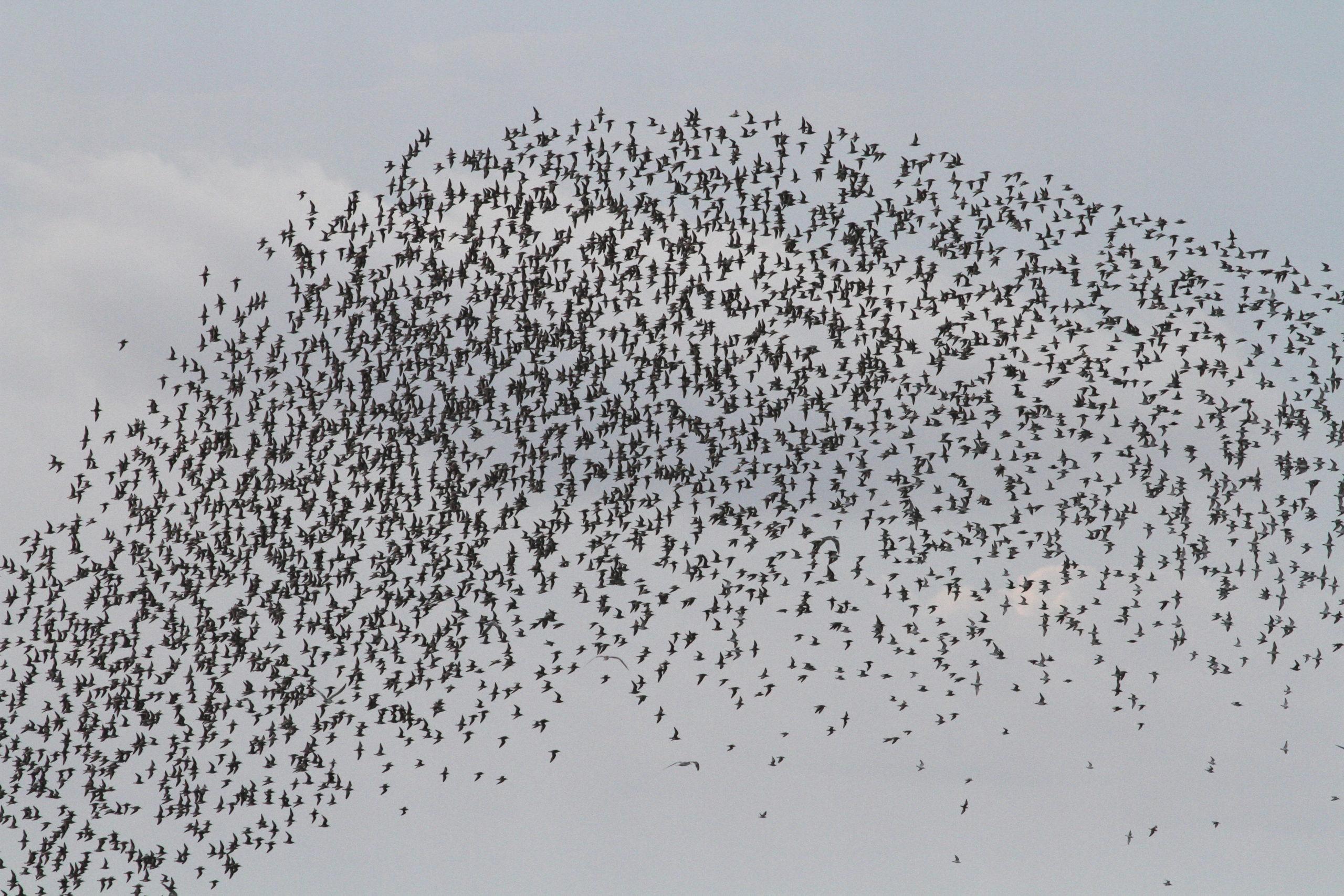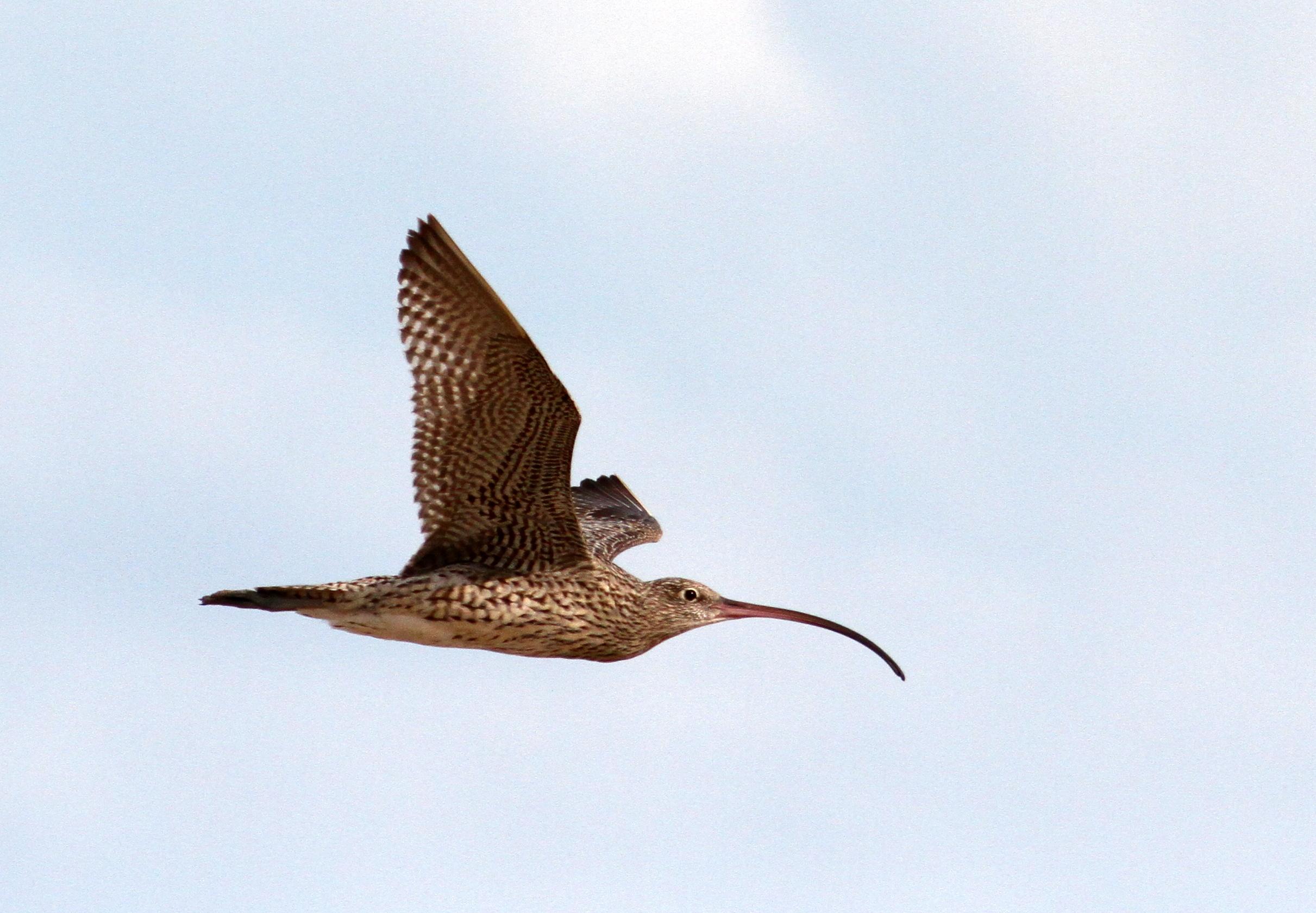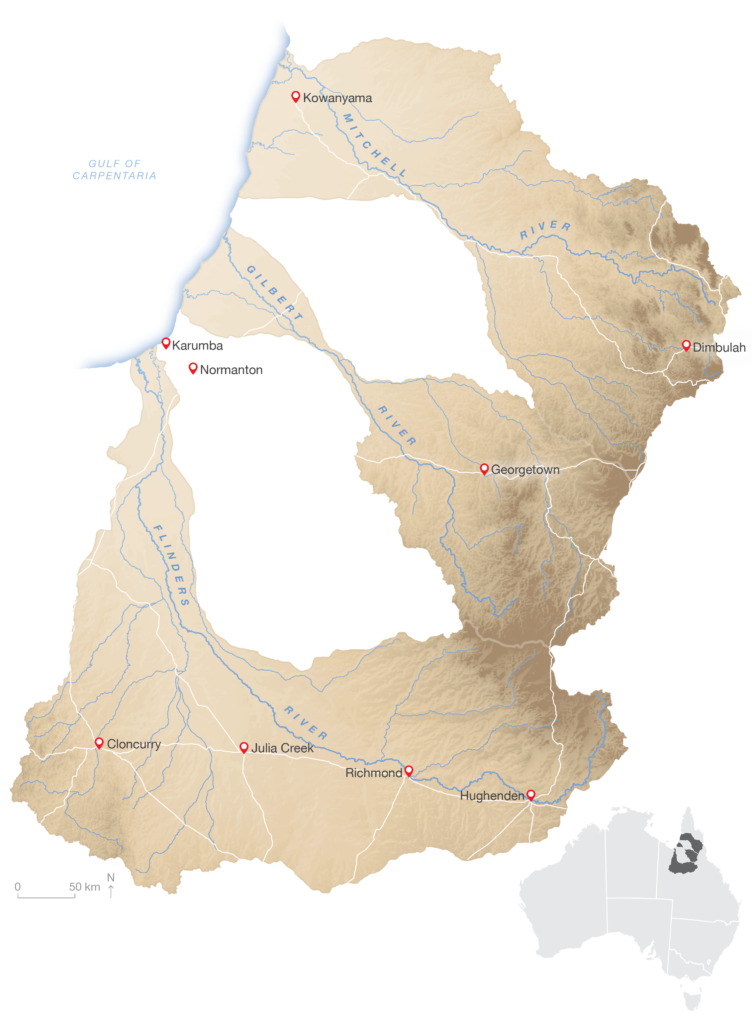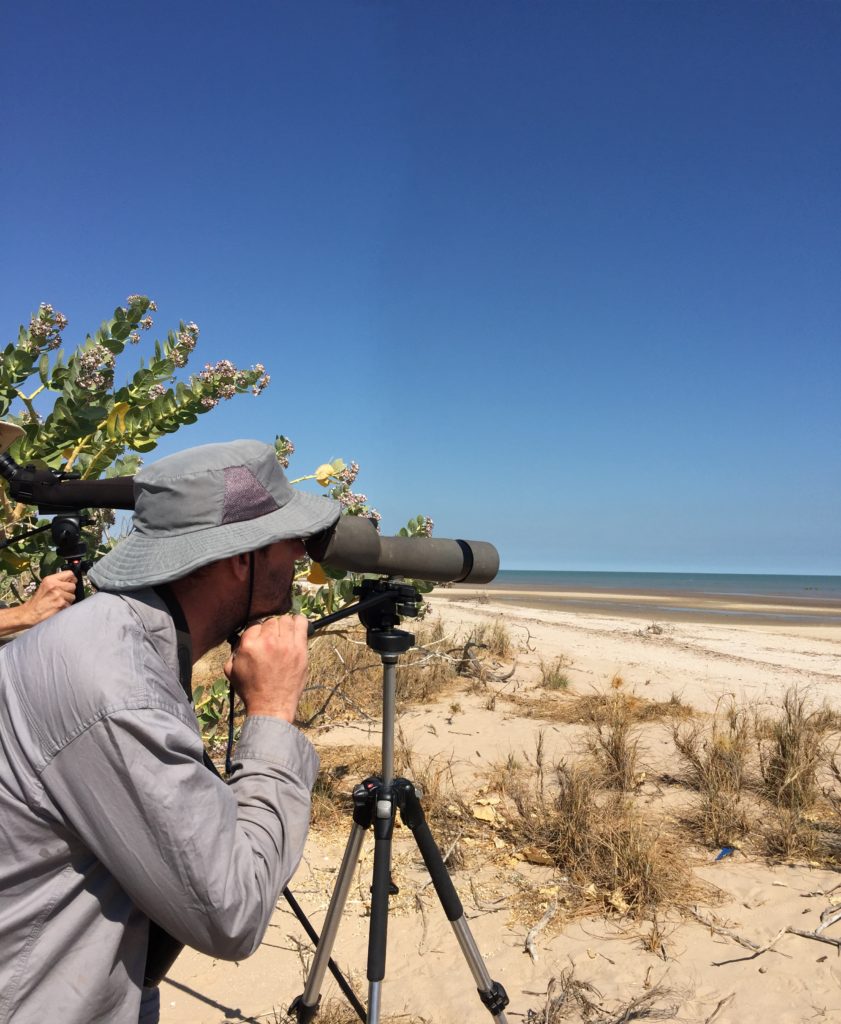2 February 2021
Authors: Dr Viki Cramer, Northern Australia Environmental Resources Hub, and Professor Michele Burford (project leader), Griffith University
The huge floodwaters that flow from the Gilbert, Mitchell and Flinders rivers into the Gulf of Carpentaria fertilise the food chain that supports thousands of migrating shorebirds each year.
As the austral spring turns to summer, up to 100,000 migratory waders descend upon the south-eastern shores of the Gulf of Carpentaria. Some of them will have flown from the Arctic – a journey of 13,000 kilometres made in a series of multi-day flights interspersed with breaks on land to rest and refuel on the shellfish, snails, crabs and worms that live on tidal flats and estuaries.
The Gulf of Carpentaria is one of the most significant sites in Australia for migratory waders, including a number of critically endangered species. Yet the benefits for the birds in stopping there were unclear.

Endangered Great Knots in flight. Photo: Amanda Lilleyman.
Mike Ronan, Manager of Wetlands for Queensland’s Department of Environment and Science, says that people thought that the gulf was more of a rest stop for the waders than a place where there was abundant food.
We expected the productivity of the gulf’s shorelines to be low because the productivity of the land around the rivers is low.
– Mike Ronan, Manager of Wetlands, Department of Environment and Science (Queensland)

The endangered Eastern Curlew is a regular visitor to the Gulf of Carpentaria. Photo: Amanda Lilleyman.
Yet research led by Professor Michele Burford of Griffith University, and funded by the Australian Government’s National Environmental Science Program, has discovered that the sand and mudflats in the Gulf of Carpentaria have higher densities of the small animals that the waders feed on, than many other places in Australia.
Key to this productivity is the vast volume of water that flows down the Flinders, Mitchell and Gilbert rivers when they are in flood. The researchers found that even though the amount of nutrients in a litre of floodwater was no greater than in normal river flows, the sheer volume of the floodwaters means that high amounts of nutrients are carried downstream and into the estuaries. These nutrients promote the growth of algae that worms, snails and crabs feed on.

The Flinders, Mitchell and Gilbert rivers flow into the Gulf of Carpentaria.
Migratory waders have lost many of their ‘rest and refuel’ sites in east Asia to coastal reclamation projects, hunting and pollution. Protecting the food resources provided by the gulf’s remote and largely undisturbed tidal flats, estuaries and wetlands will be essential to the survival of endangered species like the Great Knot (Calidris tenuirostris) and Eastern Curlew (Numenius madagascariensis).
If you reduce the amount of flow going downstream, you reduce the amount of nutrients going downstream. Our findings will help inform decisions about the kinds of water development there are, and how much water development there is, to ensure that those environments on the coast that are really low in nutrients get the nutrients they need.
– Professor Michele Burford, Project leader, Australian Rivers Institute (Griffith University)

Researcher Stephen Faggotter counting shorebirds on the flats of the Gulf of Carpentaria. Photo: Michele Burford.
Want to know more about the Resilient Landscapes Hub's activities and our research into practical solutions to environmental problems? Stay informed about activities, research, publications, events and more through the Hub newsletter.